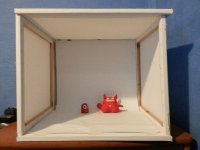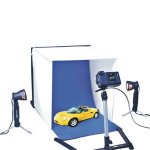scottypaterson
New member
Hello!
New guy on the block and keen learner
What i am trying to learn is stock photography and a little food photography
and recently bought myself a camera.
So i made myself a light tent from canvas panels,the picture should be below it is
20 x 16 x 16 inches

And i used it outside on a nice day and one of my better pictures out of many below.
When i took it into Photoshop, the paint bucket tool changed white background into any
color in one press.Is that a good sign that lighting was even? i have had some that looked underexposed but i am still learning my way through settings and hopefully come together in time.

I would like to use it in the house and i guess i need to know what sort of lights i need to buy?
I have tried to research but my head is spinning with confusion, and trying to look online even more so so many out there.
Also advice for any other items i could get or need ? so far just my camera lens at 18mm - 55mm and my home made crafted light tent.
Thanks in advance for any replies Scott
New guy on the block and keen learner
What i am trying to learn is stock photography and a little food photography
and recently bought myself a camera.
So i made myself a light tent from canvas panels,the picture should be below it is
20 x 16 x 16 inches

And i used it outside on a nice day and one of my better pictures out of many below.
When i took it into Photoshop, the paint bucket tool changed white background into any
color in one press.Is that a good sign that lighting was even? i have had some that looked underexposed but i am still learning my way through settings and hopefully come together in time.

I would like to use it in the house and i guess i need to know what sort of lights i need to buy?
I have tried to research but my head is spinning with confusion, and trying to look online even more so so many out there.
Also advice for any other items i could get or need ? so far just my camera lens at 18mm - 55mm and my home made crafted light tent.
Thanks in advance for any replies Scott






